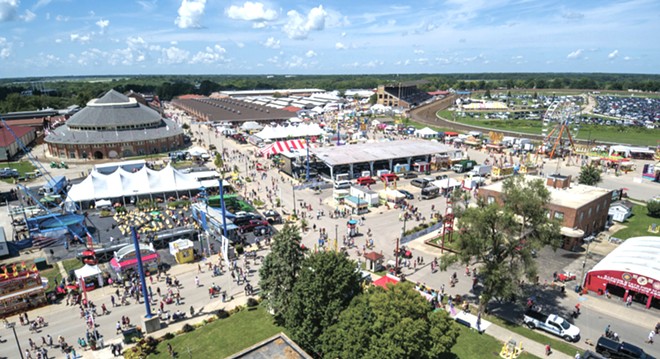
LOTS OF OPTIONS
Hold art festivals, music festivals, food festivals or car shows and create or renovate meeting rooms for conferences and special events ("Dreams of a year-round fairground," Jan. 13). Create a wedding/special events pavilion. Create a retreat center for youth groups with onsite lodging and camping. Create a plan for Happy Hollow. Renovate and update the carnival area at the main gate with mini-golf and go-carts and have open evenings in spring, summer and fall. Oh, and don't forget to fix the big fountain.
Thomas House Via Facebook.com/illinoistimes
NO ROOM
Have none of these people looked at the schedule of year-round events already held at the fairgrounds? Where are they planning to put these new events? The Illinois, Exposition and Orr buildings, as well as the Coliseum, are already used about 75% of the weekends.
Kathy Trager Via Facebook.com/illinoistimes
BUILD NEW
Demolish the old Junior Home Economics building that is condemned and put up a new, usable space. Now, I believe the building is only used for storage and the basement is where all of the horticulture supplies are for the gorgeous flowers and plants all over the grounds. Make sure that the horticulture folks have somewhere to keep their plants over winter and prep for the fair each year, but get a space that is multifunctional – for example, a building with large meeting spaces that can be divided and bunk rooms with bathroom and shower facilities. It could be utilized by people coming to show on the grounds, staff during the fair or youth retreats.
I remember many years ago when the Junior Home Economics building was first condemned, the Illinois 4H tried to raise money to put up a steel building to use as show and event space. Now, all our general projects have a great home in the Orr Building, but the space as described above could still bring value to the fairground.
Rebecca Jo Luke Via Facebook.com/illinoistimes
PROVIDING FOOD
I would like to thank Illinois Times for drawing attention to food insecurity in your cover story, "Where does the next meal come from?" (Dec. 16). The issue of hunger in our midst never goes away in our society even in the best of economic times. I am grateful for your efforts to highlight those organizations and individuals whose heroic efforts seek to relieve the suffering of so many people who cannot put adequate food on the table for themselves and their families.
I would also like to point out that Catholic Charities in the Diocese of Springfield in Illinois has been at the forefront of hunger relief efforts in central Illinois for almost 100 years. Inspired by the words of Jesus in the Gospel, "For I was hungry and you gave me something to eat," Catholic Charities operates food pantries year-round in Springfield and other communities, serving thousands of men, women and children annually. Over the last decade, the Catholic Charities Mobile Food Pantry program has operated a fleet of seven refrigerated trucks, making hundreds of trips to dozens of central Illinois rural communities in our 28-county diocese. This unique program has delivered several tons of food to hundreds of families living in the hidden world of rural poverty.
In addition, Catholic Charities has operated the iconic St. John's Breadline in Springfield since the 1920s. Throughout the pandemic, the Breadline has fought to stay open for our patrons in need, serving over 150,000 meals in 2021.
Catholic Charities is incredibly grateful to all of the staff, board members, volunteers and donors who continue to support our daily efforts in central Illinois to answer the question, "Where does the next meal come from?"
Steven E. Roach, executive director Catholic Charities

